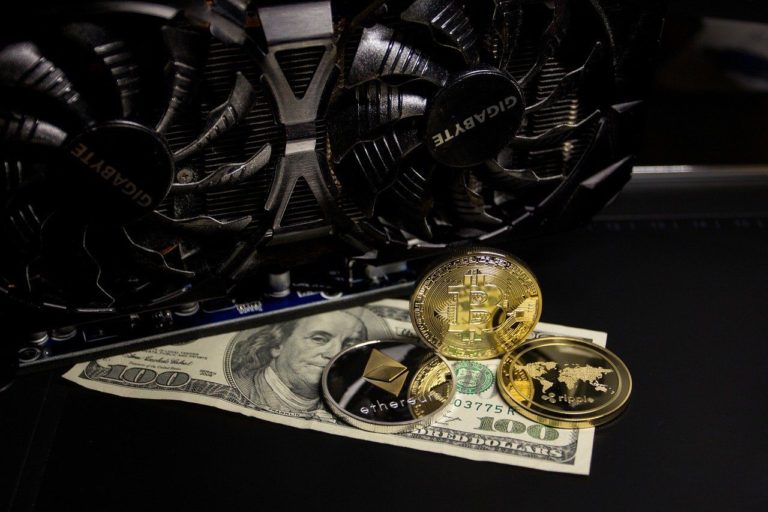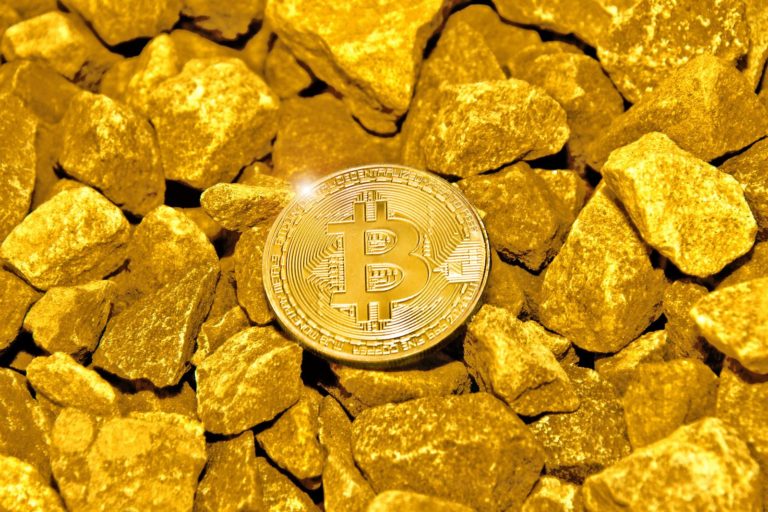Table of Contents
ToggleSeveral months are behind us, which for many have restored faith in cryptocurrencies, which have been shuffling mercilessly through the bottom of the last few years. In the last two months, however, we have witnessed tremendous increases not only on the King of Cryptocurrencies – Bitcoin – but also a rich “altseason”, which brought returns of several hundred or even more percent. In addition to the charts, a lot was also happening in the background. More institutions and even large investment banks are convincing themselves to cryptocurrencies. Adoption is growing even among medium and small enterprises. There were also things that philosophers did not dream of. Let’s summarize these last two months.
It happened – institutions that were supposed to arrive 3 years ago on a white horse with sacks full of money and extend the boom appeared late, but the effects are stunning. The capitalization of the entire cryptocurrency market as of March 1 was approximately USD 1,450 billion, to reach over USD 2,300 billion at the peak. Now the capitalization of all cryptos hovers around $ 2,000 billion. The reasons for such a valuation of the digital asset market can be found in many places. Certainly, the so-called “Street”, that is, small individual investors. The US “Stimulus Checks” could have been a particularly stimulus for the market – money that President Biden’s administration had given away (or rather returned) to the greater part of the American population in order to stimulate the economy. Analysts predicted that much of the “stimulus” money young people received would affect the crypto market.

Probably the most important injection to the market was the money of institutional investors, which poured a large stream into Bitcoin and leading alts. A large part of them accumulated – mainly BTC – during the bear market, but in March, April and the months preceding them, they increased their exposure to this market and even expanded their portfolio with altcoins – like the Grayscale fund. They have already managed over 650,000 BTC, over 3 million ETH, 1.5 million LTC and several other alts. The Bitcoin segment alone in the hands of Grayscale Investments amounts to almost USD 34 billion. Interestingly, they were bought at an average price of $ 41,000 apiece. Bitcoins are also owned by other companies and funds. Mt.Gox – an already collapsed cryptocurrency exchange – still holds over 141,000 BTC. A similar amount – 140,000 BTC – is kept on its wallets by Block.one, the company responsible for the EOS project and the EOSIO platform. The MicroStrategy fund has approximately 71,000 BTC, and Tesla – Elon Musk’s giant – has purchased a total of 38,500 BTC. It is possible that Elon Musk himself also purchased Bitcoins for his own private account. So it turns out that only in the hands of these top, institutional crypto HODLers there is over 1,000,000 BTC. We can add the suspicions that the US government itself holds about 70,000 BTC. There are also many other smaller – but nevertheless impressive – entities that accumulate digital gold. It is certainly more than 10% of the total circulation of Bitcoin.
Growing involvement also occurs from the other side. Institutions that have so far only operated on crypto markets are storming traditional trading floors. The cryptocurrency exchange Coinbase made its debut on the NASDAQ exchange in April, where, after opening, it was valued at over USD 100 billion. At that time, top exchanges such as Binance and Bittrex began to list tokenized shares of listed companies, listed on the traditional trading floor – including the shares of the aforementioned cryptocurrency exchange, Coinbase.

The rising price attracted many people to the market, who last heard from cryptocurrencies in December 2017. The rising price not only encourages them to buy Bitcoin and other cryptocurrencies, but also increases the widespread adoption of cryptocurrencies in many areas. First of all, the number of bitcoin machines – ATMs that enable the purchase and sale of Bitcoin is growing in the world like mushrooms. The number of bitomats in the US alone increased by 177%. In March last year, it was less than 5,000 machines nationwide, while in March this year it is already over 13,500 bitomats. Globally, there was a 58% increase in available bitcoin ATMs, year on year.
In March, we all learned that we would pay with Bitcoin in one of the nightclubs in Thailand. This news was popular, however, it is only a symbol of the multiplying places where cryptocurrency payments are possible. Tesla, mentioned earlier, has declared that the latest model of their electric car will be available for purchase with BTC. One of the most interesting examples of cryptocurrency adoption is the Latvian airlines that accept payments … Dogecoin! Information about companies that offer salaries to their employees in digital currencies is also coming in.
Everything indicates that cryptocurrencies – if accepted by governments – will function perfectly in an environment dominated so far by paper fiat currencies. Willy Woo – an on-chain analyst – recently stated that the broad adoption of Bitcoin will significantly reduce its exchange rate fluctuations, which will be similar to those observed in the case of ordinary national currencies such as the pounds and the dollar.

It is said that the gold rush in the US earned the most sellers of shovels, pickaxes, bowls and other things needed to search for this precious metal. The same is the case with Bitcoin and other digital currencies that run on the Proof-Of-Work protocol. The prices of graphics cards have been soaring for several months at unprecedented price levels. You can observe jump, even several hundred percent increases in the prices of this type of computer components. There is also a shortage of these products on the market. The reason is mainly – not related to cryptocurrencies – shortages in the resources for the production of integrated circuits. The remaining graphics cards on the market – even of older types – were swept off the shelves and mounted on metal frames of excavators.
The leading “shovel seller” – or rather ASIC systems, dedicated to mining individual cryptocurrencies – is the Chinese giant, Bitmain. In April, he announced the launch of a new ASIC that will mine Ethereum. This is a quick response to the shortage in the supply of graphics cards. A Chinese producer and mining giant wants to fill this gap. However, it is not known whether the Ethereum protocol will be updated in a short time, which will block the use of ASICs.

Non-Fungible-Tokens is another crypto trend that we are observing in parallel to the increased interest in DeFi (decentralized finance). NFT tokens differ from other cryptocurrencies in that they are unique. 1 BTC = 1 BTC, even if we swap them. For NFT tokens, this rule does not work. Each token is different. The most expensive NFT token so far valued and purchased has reached the price of USD 69 million. The rule requires that emitting a token is tantamount to completely destroying the physical thing that the token is supposed to represent. This is how one of the paintings by Banksy – the famous street artist was burnt. Banksy’s image now “hangs” on the blockchain as a line of code – but admittedly an inimitable and unique line of code.

Almost from the beginning of the existence of cryptocurrencies, state governments have had a problem with them. Often a lack of understanding leads to the introduction of erroneous regulations – and understanding their phenomenon and how they pose a threat to the government’s monopoly on certain issues can lead to even worse actions. Examples can be found in India and Russia. India planned to completely bank (ban) the use of cryptocurrencies in their country. Russia, on the other hand, is stepping up efforts to ensure that cryptocurrency holders are heavily under surveillance and their movements are carefully recorded. On the other hand – in the United States – Gary Gensler – the organizer of a kind of blockchain chair at MIT University – headed the SEC (the US Financial Supervision Authority). He is an enthusiast of this technology, understanding the phenomenon of cryptocurrencies, which awakens both hopes and nightmares in the minds of the global crypto community.
At the same time, many countries are working on their own digital currencies (CBDCs). However, they have little to do with the freedom that cryptocurrencies bring. In the state edition, the cryptocurrency is to be centralized and programmable. The Chinese Yuan is the closest to the general use. The Chinese government’s plans for a digital Yuan have aroused controversy. The new currency is to be able to set its expiry date. Which means that the holders will have to spend it within a certain period of time, after which their money will be evaporated from their accounts. This is used, for example, to stimulate the economy within a strictly defined period of time. In addition, the Communist Party of China has included blockchain technology as a very important element in the next five-year plan (central development plan), which will help improve the functioning of the state. Russia is also working on its CBDC, which intends to issue a digital ruble. Among the countries developing their digital national currency there are also, among others Hong Kong, Australia and the Marshall Islands. The Bahamas have already launched their CBDC – “Sand Dollar”.

Iran, in turn, has no plans to launch its own CBDC, but the authorities there are seriously considering mining Bitcoin. Digital gold (and it is freshly dug, difficult to track) could help the government there bypassing sanctions.
News, events, facts from the last two months
Almost 90% of all Bitcoins have been mined – the last one will be excavated on schedule around 2140.
On March 1, the price of BTC was around $ 46,000 to reach ATH of around $ 64,000 in April.
March saw the first Dogecoin update in almost 2.5 years – “Dogecoin Core 1.14”. The DOGE alone shot up from around $ 0.05 in early March to nearly $ 0.45 in April.
John McAfee – the famous 2017 cryptocurrency guru – with allegations of money laundering and manipulation.
The legalization of DAO (Decentralized Autonomous Organization) in Wyoming, USA is slowly becoming a reality.
Litecoin has become a private coin, private like Monero.
Riot Blockchain has purchased 42,000 ASIC Antminer miners from Bitmain.
IBM will convert patents into NFT tokens.

For more than 6 years, he has been interested in cryptocurrencies, tokens and blockchain, as well as other modern technologies like artificial intelligence. I have been actively investing for more than 10 years. I have developed hundreds of highly substantive articles and publications for this and many other external portals.